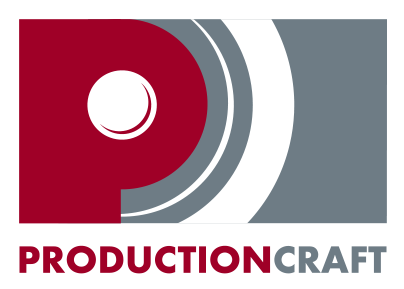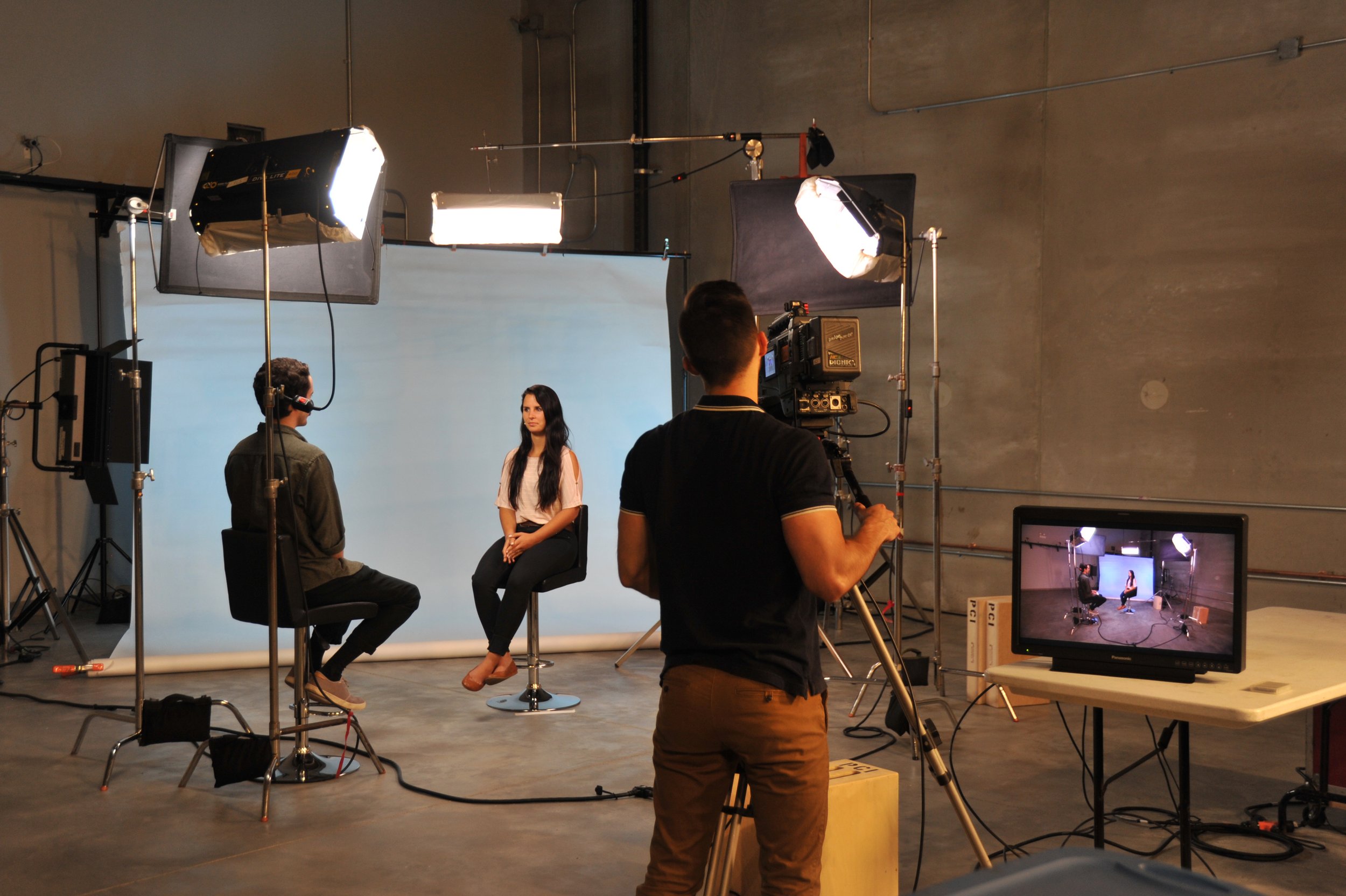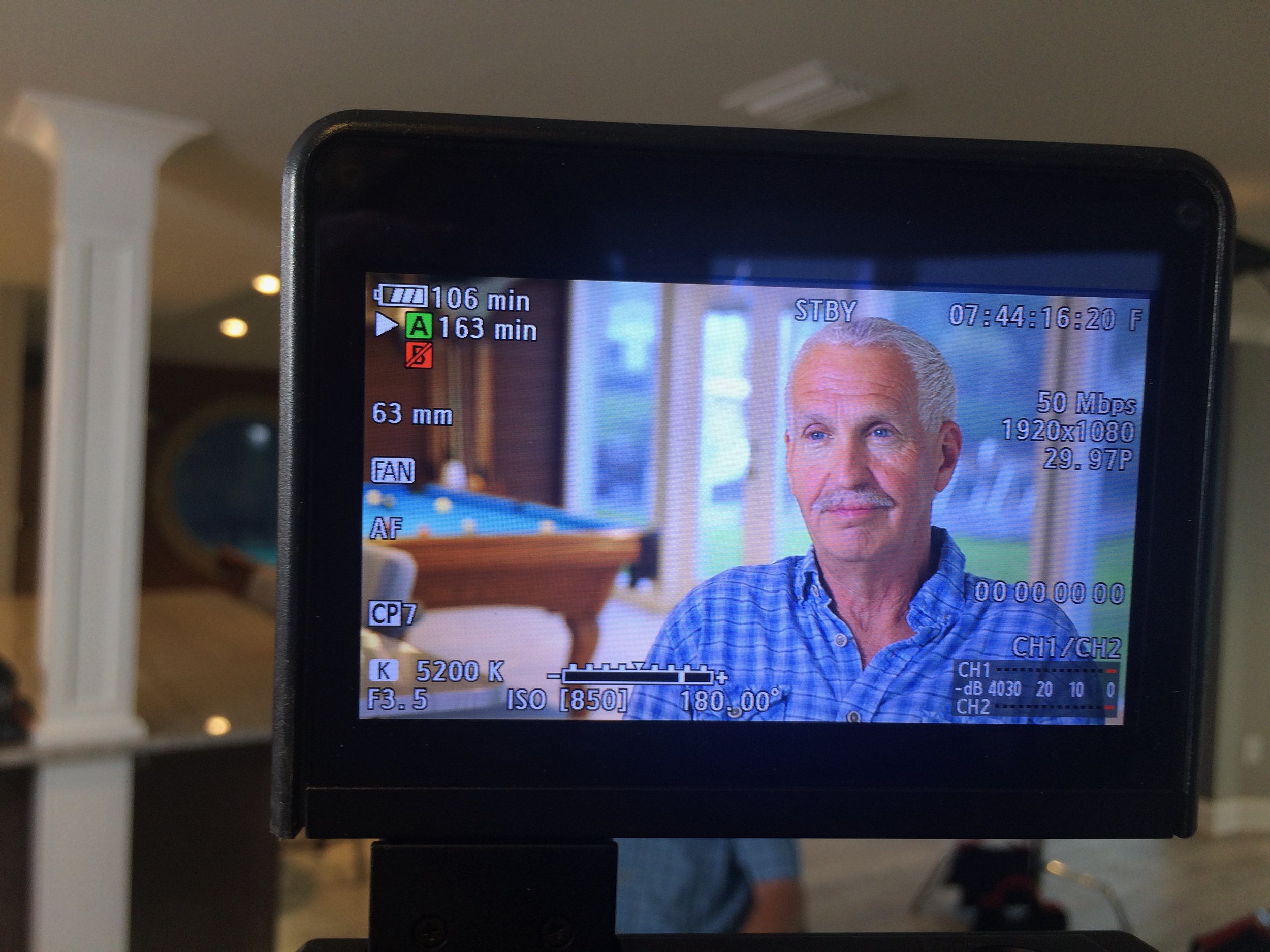Don’t Be Nervous! How to Conduct a Great Interview Part Two: During the Interview
Production Craft’s Producer/Director Dawn Arnold shares her advice as an experienced interviewer working in video production services.
As an interviewer, I’ve found more success when I embrace the opportunity to genuinely connect with someone and listen attentively to their thoughts. To that same effect, I believe that interviewees can deliver more compelling and confident responses when they feel at ease and genuinely enjoy the conversation as well.
Our previous blog goes through my steps to prepare before an interview, which is an essential part of the process. Knowing I’ve done my homework is always a major confidence-booster. Once the interview has begun though, the challenge is to keep things natural and relaxed while also remembering your objectives.
Finding the Answers and Capturing Them Properly
Getting what you need from an interview is like mining for gold. The process will require some patience— searching, excavating, and a bit of digging, but good footage will make it all worth it. Those nuggets of well-phrased information and shining pieces of human emotion are the valuable materials that will make it to the final edit. If you’ve prepared ahead, then you’re in the right place—you can say for certain there’s gold in these hills.
You’re not just trying to get answers from your interviewee, you’re trying to get useful footage of the answers. Useful footage means: clear video, no audio interference, the interviewee providing information in their own words, little-to-no irrelevant filler, still coherent outside of the larger conversation, said in a natural tone, and doesn’t sound like an answer to a direct question. You want the interviewee to ignore all the video production going on around them, unfortunately, you’ll still need to keep all this in mind. It’s a tall order, but there’s a way to do it.
Make sure the answers come out right.
Listen for the soundbites you need. The interviewee might not always be giving you answers that are ideal in terms of phrasing or relevance. They likely won’t be considering how it’ll all come together in the final edit. If you don’t get the answer you want, rephrase the question and ask again.
Sometimes the quality of the answers isn’t because of the question, it’s just a matter of when you choose to ask it. Don’t be afraid to circle back. Try again at the end of the interview. Most people are more relaxed later in the conversation and you will likely get a better response.
Make sure they know they don’t have to provide the same answer. Wanting to do well on camera can affect interviewees in different ways. In the moment, they might value fast and confident responses over taking a moment to think about the questions. By circling back you are allowing them to reflect longer on the conversation. It’s ok to revise or rephrase a statement after giving the question some more consideration.
Always listen.
Don’t worry about what the next question is. Try to keep the conversation flowing and informal to elicit natural responses. You may pick up on something new, interesting, or a unique perspective. Look them in the eye and show that you are interested in the conversation.
If they go off on a tangent, focus their attention back on the subject at hand. Give them room to talk, and politely assert where you want the discussion to be going when you have the chance.
Don’t interrupt their answer and pause before you go into your next question. This allows for emotion if it’s coming and also helps your editor in post-production. Even though you want the honesty and feel of a natural conversation, you don’t want all the slippery syntax and casual interjections that happen in real-life dialogue.
Be quiet while they are speaking. Control the polite instinct to “mhmm” in agreement as you listen to someone by nodding or offering appropriate silent affirmations. Don’t rattle papers or cough as this is all picked up in the audio.
Soliciting Emotion
Whether it’s a serious news story, fundraising video or employee recognition the potential for genuine human emotion makes interviews uniquely valuable to a video. An interview is an opportunity to capture something on this person’s face or in the tone of their voice that transcends language and reaches the audience on an emotional level. Depending on the subject or project, your interviewee will likely understand that they should be sharing some emotion in their answers, but— as I’ve already mentioned—this person is not a professional actor and this interview should not feel like a performance.
Realize that this takes time and will be a longer interview.
What you’re looking for is something authentic, and that means that it can’t be forced. Even if your interviewee is eager to be vulnerable with you and be seen on screen expressing raw emotion, that’s not easy to do on the spot.
Don’t break the mood. You’ve already put in the work of establishing a rapport with this person and done what you can to get them to forget about the camera crew. You don’t want that comfort to shatter abruptly because a dead battery or full memory card needs to be replaced. Talk to your cameraman and crew ahead of time, so they are prepared and will not interrupt at the moment your interview is getting deep. There may also be less involved parties in the room trying to do quietly get things done. Make sure craft services, the site contact, or a BTS camera crew don’t do anything to interrupt either.
Ask questions that help verbalize the feelings. Get the interviewee to remember the details of the story and how they felt at the time. Ask about how it may have impacted their family or someone else they care about. Emotion and memory are tied together in an interesting way, and we learn to recite the cold facts of a story to protect ourselves from the intense feelings associated with it. When you ask someone to fill in the gaps, you can break past the well-rehearsed beginning, middle, and end that they’ve told before. If you can get your interviewee to start telling it in a new way, it will challenge them to revisit the memories without that emotional guard up.
Trust must be earned.
Getting someone to open up takes trust. Take your time and show kindness and compassion to help gain that trust. If you want this person to revisit the messy emotions of their story, you need to be empathetic and attentive. It’s your job as the interviewer to be the human in the room. The camera is allowed to be a heartless mechanical voyeur, you’re not!
If you are interviewing someone on camera, no matter what the project is, there is always potential for feeling. Even when providing corporate video production services on a subject that seems a bit flat or producing something that is largely informational, capturing emotion is no less important.
You are not just there to read questions and keep the interviewee’s eye-line, you are there to facilitate a conversation and generate good useful footage. As an interviewer, you are the very important human touch to an otherwise very technical process. You are there to advocate for the person on set who likely has the least amount of on-set experience. Even a seasoned commercial videographer or someone with their own film production company won’t interview themself for you.
It’s a lot to keep in mind the demands of the camera crew, what the editor might prefer, and ultimately the audience experience. Following this process will not only make you a better interviewer, it will also help you relax and enjoy the interviews. With enough practice, you’ll be juggling it all effortlessly and producing excellent content.
Production Craft, Inc. is a video production company based in Chicago, serving markets worldwide.
We are proud to be a Women Business Enterprise (WBE) certified by the State of Illinois Business Enterprise Program (BEP) and the National Women Business Owners Corporation (NWBOC).




